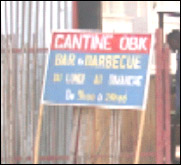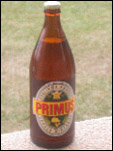 Food
in Rwanda Food
in Rwanda |
Rwandan food is neither spicy nor hot. People eat
simple meals made with locally grown ingredients.
The Rwandan diet consists mainly of sweet potatoes,
beans, corn, peas, millet and fruit. A traditional
breakfast consists of sweet potatoes and porridge,
which is a mixture of sorghum, corn and millet,
mixed with milk. In urban areas such as Kigali,
people usually have bread and tea for breakfast.
Rwandans add lots of milk and sugar to their tea.

Lunch and dinner may consist of boiled beans, bananas,
sweet potatoes or cassava. Umutsima (a dish of cassava
and corn), isombe (cassava leaves with eggplant
and spinach) and mizuzu (fried plantains) are common
dishes. Dinner is the heaviest meal. Between meals,
Rwandans often snack on fruits. Tropical fruits
such as avocados, bananas, mangos and papaya are
abundant in Rwanda. Roadside vendors in urban areas
sell roasted corn and barbecued meat. |
Many Rwandan men enjoy
drinking beer, but women rarely drink alcohol in
any form. Although Rwanda has a large commercial
brewery, many people make their own beer and alcoholic
beverages, using sorghum, corn or fermented plantains.
Ikigage is a locally brewed alcoholic drink made
from dry sorghum and urwarwa is brewed from plantains.
Traditionally, people drink beer through straws
from a single large container.

Rwandans who live in rural areas rarely eat meat.
Some families have cattle, but since cattle are
considered a status symbol, people seldom slaughter
them for meat. Many Rwandans in rural areas eat
meat only once or twice a month and some Rwandan
children suffer from protein deficiency. In urban
areas meat is more plentiful. The most popular meats
are beef and chicken. People who live near lakes
may catch and eat fish. Tilapia and sambaza are
raised on fish farms.
|

